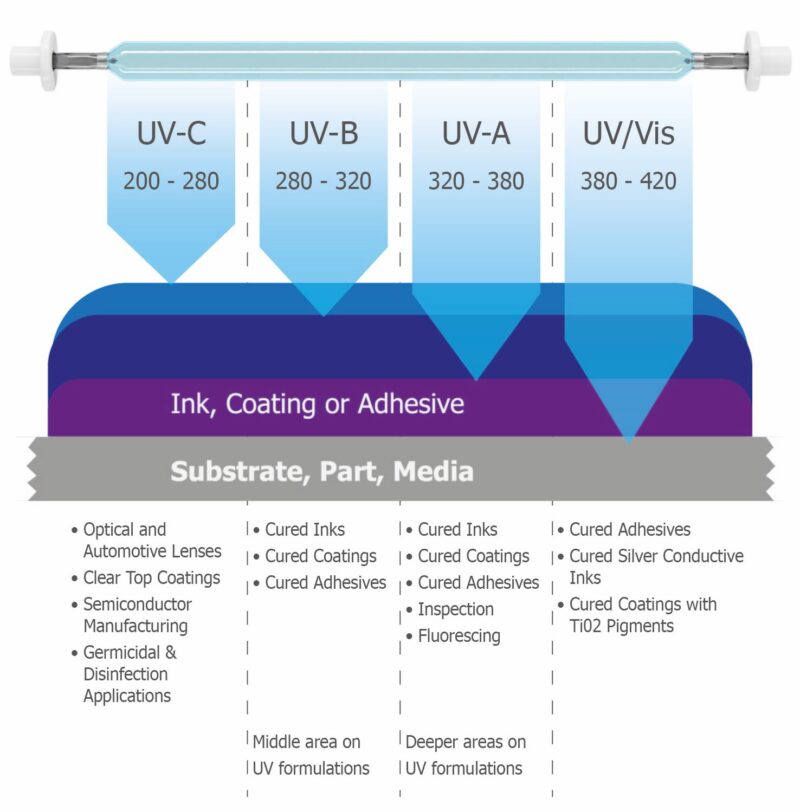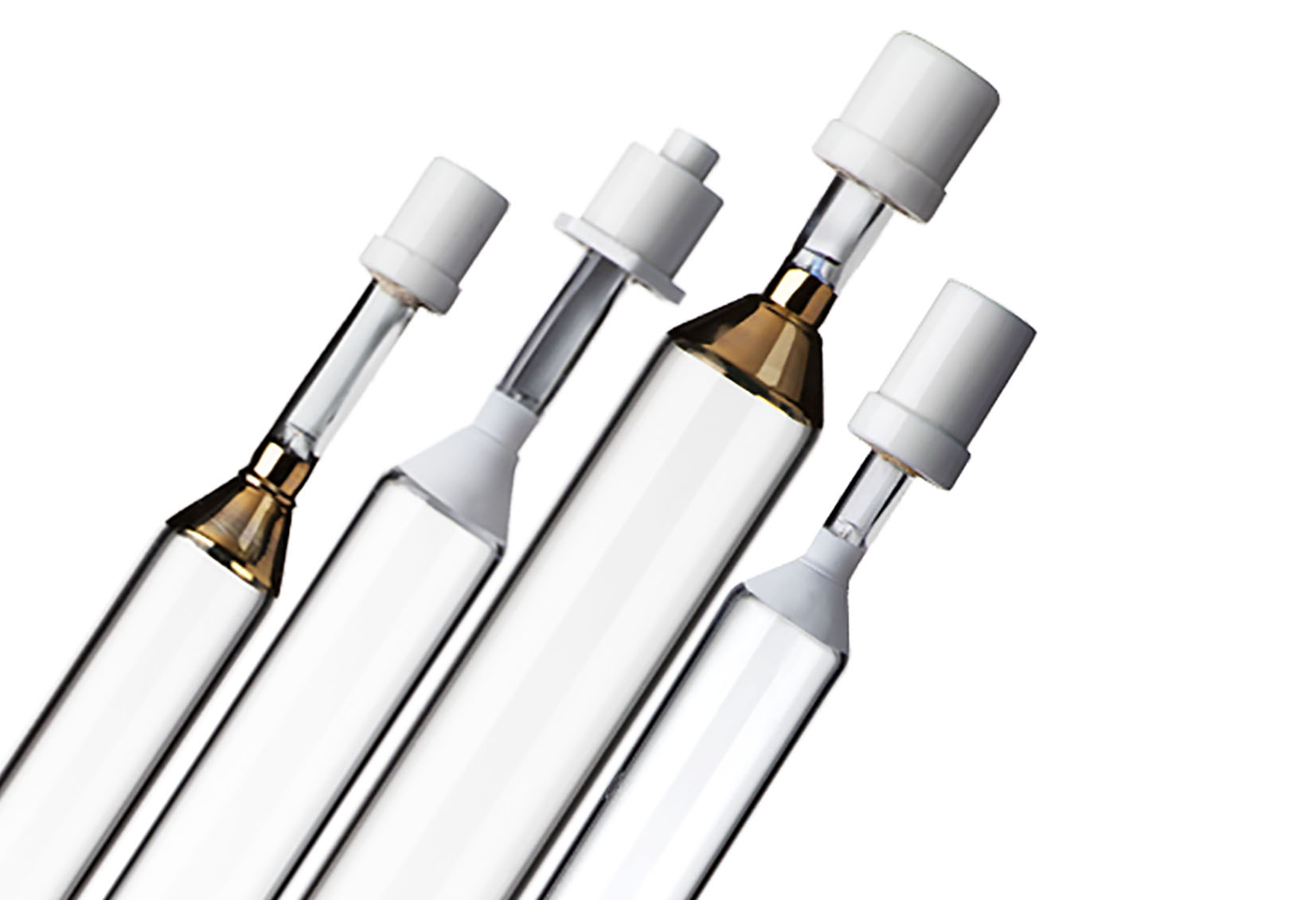The use of ultraviolet (UV) light lamps in the curing, bonding and coating industries is well established but the technical application of how UV light works in each of these operations does differ. This is due to a combination of the type of light applied, the distance and length of exposure time and the type of ink, glue or coating.
Depending on the type of application and the composition of the materials in use, there will be a different reaction to the ultraviolet light being applied, which in turn will affect the effectiveness of the overall system.
This will not only impact the exposure times required to cure, bond or coat but also the long-term effectiveness of the treatment.
In order to gain the best outcome, experts working with each industry have developed specific techniques to gain the most effective use of ultraviolet light solutions.
Let’s take a look at how ultraviolet light works
Ultraviolet light is a range of wavelengths from 250 nm to 400nm. Most of UV light is invisible to the human eye but a small amount is visible at longer wavelengths. UV-C has the shortest wavelengths and highest energy. UV-B and UV-A sit in the middle of the spectrum and UV-V has the longest and lowest energy.
These different types of light travel different lengths through a substrate and so have different uses in the curing, costing and bonding industries.
Which ultraviolet light lamp to use?
Lamps used in these industries are made from high-quality quartz that allows for the most effective transmission of UV light. The tubes are filled with noble gases (such as argon and xenon) and additional chemicals. When an electrical current is passed through the lamp the reaction of it excites the elements inside and creates UV light.
UV lamps are built to different specifications that consider the type of materials in use and the curing, bonding or coating required. By using different amounts and mixes of the core elements, different ranges of light from UV-C to UV-V are produced.
The most common element added to the lamp is mercury as this produces a broad-spectrum output across UV, visible, and infrared wavelengths.
By using specific construction materials or additional coatings, UV lamps can be adjusted to block or increase the emission of certain wavelengths. The spectral output of a mercury-based UV lamp can also be shifted by adding other metals such as iron, gallium, lead, tin, bismuth, or indium. This is referred to as ‘doping’.
For example, iron-doped mercury lamps shift part of the ultraviolet output to the longer UV-A near-visible wavelengths which result in better penetration through thicker, heavily pigmented ink formulations.
Gallium-doped mercury lamps are used to create UV-V spectrum light which is good for white coatings, either in printing or in the furniture coating industries (especially if they contain titanium dioxide).
How do we know which specification will work?
Almost each manufacturing process that requires a UV curing, coating or bonding system will have unique requirements. It’s a complex mix, ranging from the type of materials being used, quantities, sizes and power and length of time required for the process to work.
Knowing what type of lamp and system to use to get the best result for your needs is where the experts come in. Any established original equipment manufacturer will know how to assess and calculate the right UV lamps for the best results from their systems. It’s important to get this right from the start so that production can be efficient and produce consistently high-quality results.
Alpha-Cure works with many OEMs to manufacture UV lamps for their systems. This means we build to system specifications and requirements adding in doping chemicals where required.
If you’d like to understand more about how ultraviolet light in a curing, coating or bonding system could work for you, CONTACT US.
Latest Articles
A Busy Year! Alpha-Cure’s 2025 Year in Review
A Year of Global Reach and Innovation for Alpha-Cure As 2025 draws to a close, we’re reflectin...
View ArticleAvoid Holiday Disruption: Key Order Deadlines for Year End Delivery
As we approach the end of the year, production schedules get tighter and distribution channels come ...
View ArticleAll UV Lamps. One Standard: How Alpha-Cure Scaled UK Excellence Globally
When Alpha-Cure expanded our manufacturing footprint to China, it wasn’t about lowering costs, it ...
View ArticleIndustry Focus – Helping Open New Markets for UV Technology
A guide to support local distributor growth At Alpha-Cure, we’re proud of the strong presence ...
View Article
